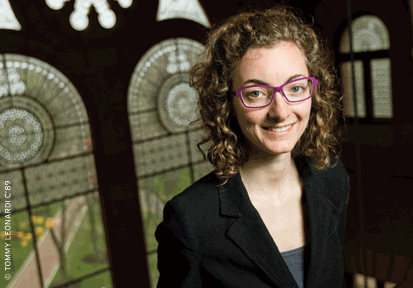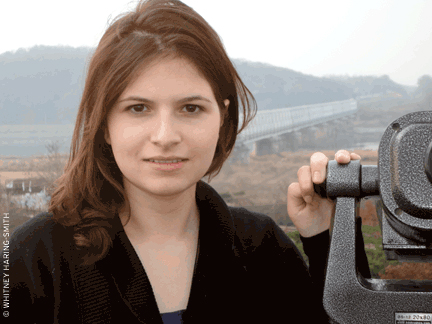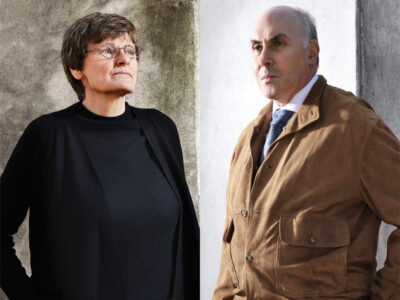
Aimee Bailey 
Abby Seldin
By the age of 27, Aimee Bailey EAS’06 had already racked up nine scholarships, fellowships, and research grants—plus a patent for a new method of generating hydrogen. Abby Seldin C’09 G’09 hasn’t exactly squandered her youth, either. A year after becoming the first undergraduate in the University’s history to curate an exhibition at the Penn Museum of Archaeology and Anthropology, she won a Rhodes Scholarship [“Gazetteer,” Sept|Oct 2008].
Now both women can add another notch to their prestigious-fellowship belts. In February Bailey and Seldin were named Luce Scholars, making their alma mater the only university represented twice among the 18 recipients this year. Established in 1974 by the Henry Luce Foundation, the fellowship program aims to spread knowledge and understanding of the Asian world to promising young American scholars. For that reason, the program specifically targets those who have considerable achievements in other fields, but little or no exposure to Asia.
“I have actually never been to Asia before, so I’m pretty curious about what the continent has in store for me,” says Bailey, who currently works for the US Department of Energy’s solar-energy technologies program. The Luce Foundation will provide a stipend, language training, and professional placement for one year.
Seldin—who was profiled in the Gazette two years ago [“Gazetter,” Jan|Feb 2009]—will be placed in Hong Kong, where she plans to work in the cultural heritage and tourism industry.
While Bailey had not finalized her plans, she expressed interest in working in the field of renewable-energy-technology deployment, probably in China.
“We have an opportunity to figure out how to develop in a sustainable way,” she says. “I’m really attracted to that technological challenge of sustainable development.”
Bailey learned about the Luce program as a senior at Penn, but after earning a degree in materials science and engineering, she decided to hold off on applying in favor of completing a PhD in condensed-matter theory physics at Imperial College London.
Her work at the Department of Energy, she says, showed her how interconnected the world is, and she decided that the rapidly rising demand for energy in Asia made it a perfect time for her to study there.
Bailey recognized the importance of interconnectivity early on, taking a strong interdisciplinary route in her studies at Penn. She cites that decision as one of the most important of her undergraduate career. As a student she participated in research groups on the International Thermonuclear Experimental Reactor, hydrogen storage, improving the biocompatibility of implants, and “engineering photonic crystal devices capable of remote chemical detection.” She also served as a teaching assistant and mentor during her time at Penn.
“Interdisciplinary approaches are super important because the majority of the grand challenges facing society are interdisciplinary ones,” she explains. Her work at the Department of Energy, for instance, draws freely from multiple branches of science and engineering.
Bailey takes a similar catch-all approach to her personal life as well, finding time to take a break from research to brew beer and make stained-glass windows. “You have to have hobbies,” she said as she described the American pale ale she finished brewing soon after winning the Luce.
A celebratory beverage to remember fondly, perhaps, during a year of mass-produced Tsingtao.
—Molly Sprayregen C’13




